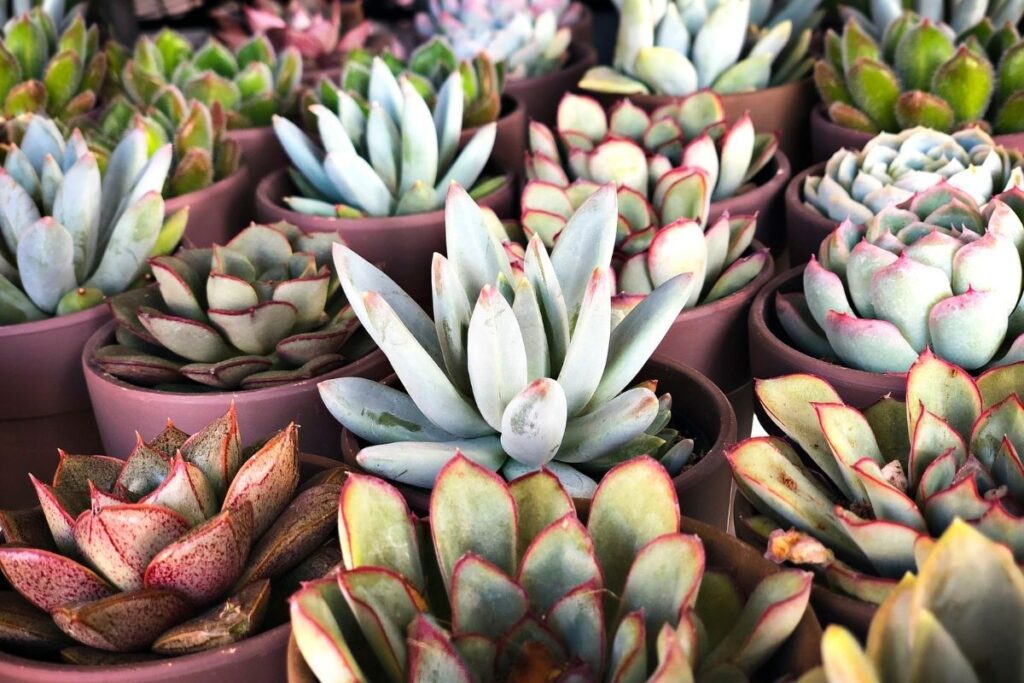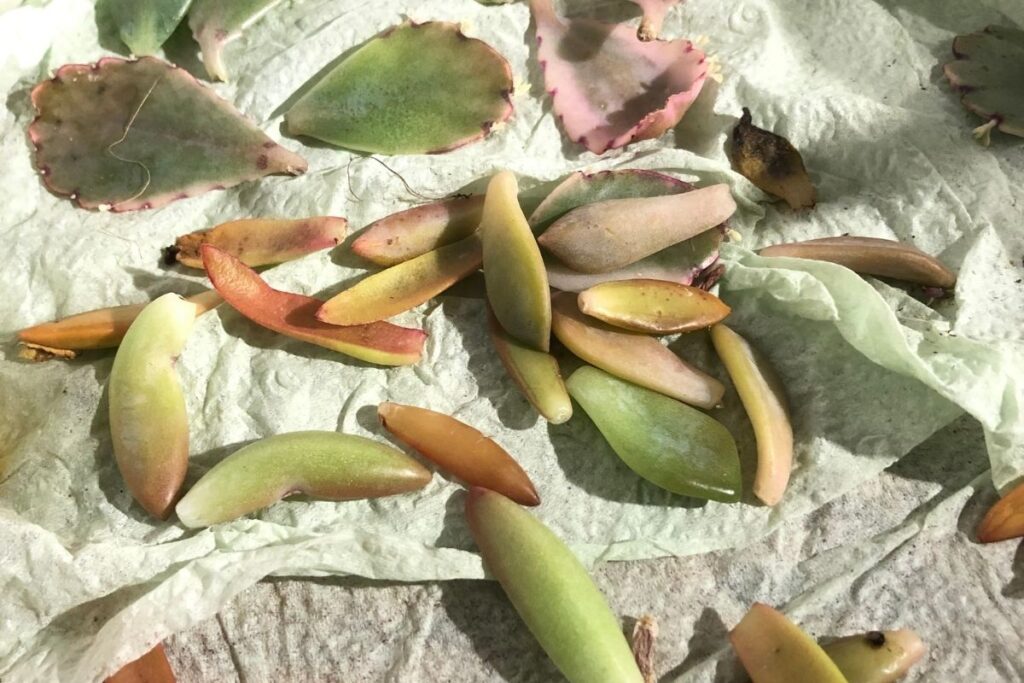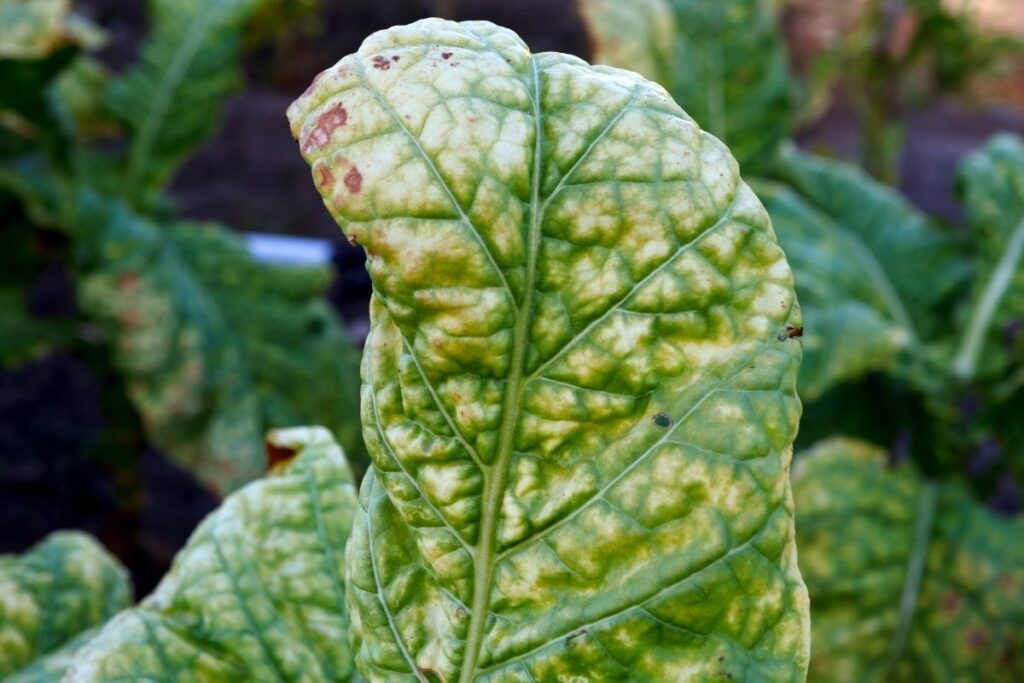Succulents are attractive plants, but their looks can fade if they start to die. Succulents resist periods of drought by storing water within their leaves, roots, and stems. Read on for my guide to saving a succulent.

This gives them their noticeably thick and rubbery appearance. When a succulent dies, its leaves may start to wither, may change color, or they may shed its leaves entirely.
These different symptoms indicate why your succulent is dying in the first place. We’ll cover the various reasons why your beloved plant may be perishing in this article. You’ll also find some tips on how to cure and revive your plant below.
Keep reading to find out why your succulent is dying and how to save it.
If Your Succulent Is Yellow, Brown, Or Black
Succulents have evolved to grow best in hot, dry conditions. They need well-draining soil and low rainfall to thrive best.
To keep your succulents alive and prevent their leaves from changing color, you need to give your succulent the conditions it needs to survive. This involves recreating their native environment.
You don’t need to go to the desert to do this! Simply swap heavy, dense soil for a grittier, well-draining type.
You should start watering it when the soil surrounding the roots has dried completely. This mimics the watering cycle in their native climate, ie. low rainfall, then drought.
If you water your succulent too often or plant it within general potting soil, moisture can start building up around the roots. Succulents also need to be planted in pots with draining holes in the bottom.
This lets any added water flow out, preventing moisture from building up in the soil and causing root rot.
Keeping your succulent in a tray or saucer can lead to water building up at the bottom. The soil at the base of the pot then becomes soggy, which can cause root rot or the leaves to change color.
RELATED: 25 Beautiful Flowering Succulents To Grow Indoors (With Pictures)
How To Save A Dying Succulent That’s Changed Color
Use our tips below to save your succulent that has changed color! Remember, these might not work for all succulent plants, so be sure to give all of these tips a try!
Stop Overwatering
Watering your succulents more than once a week can make their leaves turn brown, black, or yellow. You should only water your succulents when the soil next to the roots is completely dry.
This normally needs around two weeks, but this may vary depending on where you live, the soil’s drainage ability, and how big your pot is.
Change Potting Soil
Potting soil holds onto moisture for a very long time. The best soil for your succulent shouldn’t retain water and should drain easily.
If your succulent is kept within general potting soil, replace it with special cacti and succulent soil. This should be gritty, open, and well-draining, imitating the conditions of its native setting.
Only Use Pots With Drain Holes At The Bottom
You can plant your succulents in several pots, but they need to have holes at the base so excess water can escape. Clay or terracotta are nice materials as they are more porous, which can help the soil dry out efficiently.
Use pots that are similar to your succulent size. Keeping a small succulent in a large pot can make the soil hold onto moisture, increasing the risk of your succulent changing color.
If Your Succulent Is Losing Leaves

Most succulents begin losing leaves when the soil surrounding the roots has too much moisture. Watering too often, using general potting soil and pots without drainage holes can all make your succulents lose their leaves.
Succulents evolved to resist drought, so they don’t need moisture-retaining soil.
If your succulent is losing its leaves, you need to stop watering it as often to prevent root rot from happening in the future. You can save your succulents by trying to mimic their native climate watering cycle.
How To Save A Succulent That’s Losing Its Leaves
If your succulent is losing its leaves then there are a few things you can try. Check out the tips below!
Stop Overwatering
Never water your succulents more than once a week. If you plan on watering it again, check the soil to ensure that it’s completely dry.
The best amount to water your plant is every 14 days. If the soil feels moist or damp, don’t water it and wait for it to dry out.
Use Well-Draining Soil
As mentioned before, general potting soil retains water. You need to purchase special cacti and succulent soil from a garden center or online. This will have aeration space that allows moisture to drain out from it.
Empty Trays And Saucers Consistently
This makes sure that any leftover water doesn’t reach the succulent’s roots.
Succulents cannot thrive in oversaturated soil as this can lead to root rot, leading to the succulents losing their leaves, or as mentioned above, changing color.
If Your Succulent’s Leaves Are Shrinking, Wilting, Or Crinkled
Succulents often die due to overwatering, as moisture around the roots can lead to root rot. However, not watering your succulents enough can also lead to them perishing.
If your plant doesn’t receive enough water or if they’re kept in hot conditions, it can undergo drought stress.
Drought stress can also occur when potting soil turns hard. This leads to water running off of its surface, so it cannot travel through the soil to reach the roots.
If the roots don’t receive water, they cannot transport water to the leaves, so they’ll start wilting or shrinking.
Drought stress can also make the succulent leaves curl or become thinner. Succulents take water from the soil and store it within their leaves.
If they don’t have an adequate water supply, they will start feeding on the moisture within their leaves. This makes them thin, wrinkled, and in some cases, may start drooping.
Succulents don’t need to be watered regularly, but when you do, they will need a good amount of water. Too little water will only reach the top layer of soil. This won’t be enough to reach the roots, which can then cause drought stress.
Succulents only need to be watered every 14 days once the soil has dried out. Despite this, they still need to receive enough water to make sure the leaves stay thick and plump.
RELATED: Pests in Succulents and How to Get Rid of Them by Chemical & Natural Ways?
How To Save Succulents With Wrinkled Leaves

Here are a few things that you can do to save your succulents if they have wrinkled leaves.
Leave The Succulents In Water For 10 Minutes
Putting drought-stressed plants in a bowl of water lets the fluid travel to the roots. This is a great solution if your potting soil is hard and water runs off of the surface.
After 10 minutes, remove the succulent and let the moisture drain out of the holes.
Water Your Soil With Enough Fluid
Succulents always need a decent amount of water so leftover water escapes from the bottom of the pot.
This lets the soil retain enough moisture which travels to the leaves, replenishing their water supply so the leaves can recover.
Water More Often – But Only If Needed
If your succulent has succumbed to drought stress, they will need regular watering to stop the leaves from drying out. It’s best to wait for the soil to dry out completely, then give it a decent soak every 14 days.
Change The Potting Soil If Water Runs Off Of It
Potting soil can turn hard when it dries, which leads to water running off of its surface. Succulents require soil with enough aeration.
This lets water travel to the roots without building up inside. Purchase cacti and succulent soil from a garden center and replant your succulent.
Remove Your Plant From Any Heat Sources
Fireplaces, radiators, or cookers can make your succulent lose water quicker, drying out the leaves in the process. Succulents can grow at room temperature, provided they aren’t exposed to direct indoor heat.
Conclusion
Most succulents begin dying if they are planted in slow-draining soil or if they are watered too often. Moisture buildup can lead to root rot, which can turn the succulent leaves brown, yellow, or black.
Too much water can also cause the succulent to turn mushy or lose its leaves. This can occur if the pot has no drainage holes, as water cannot drain out of it.
Succulents only need to be watered every fortnight, and only when the soil is completely dry. However, if a succulent’s leaves are withered, this indicates that it needs more water.
Make sure that when you give your plant enough water each fortnight and be sure to use specially formulated succulent soil instead of potting soil.
Potting soil can become hard and prevent water from reaching its roots, causing the succulent leaves to wither and dry out.
RELATED: Find Out How to Choose the Right Succulent Pot (Easy Guide with Tips)
Frequently Asked Questions
How Do You Revive A Dying Succulent?
If your succulent leaves look yellow, brown, or black, or if it has lost them completely, it has been overwatered. Stop watering the plant and if it is kept in potting soil, replace it with soil designed for cacti or succulents.
Examine the soil around the roots. Once it is fully dry, only water every two weeks. If the succulent leaves are dried out and withered, they need more water. Place your succulent in water for 10 minutes and keep it away from direct heat.
How Do I Know If My Succulent Is Overwatered?
Succulents are designed to survive in drought, so they don’t need to be watered too often. An overwatered succulent’s leaves will change color, from green to yellow, brown, or black.
They will become soft and mushy and may fall off entirely. This is also a sign of root rot when the roots have too much moisture.
Do Succulents Need Sunlight?
A succulent’s native environment receives sunlight regularly, so they’ll thrive well in the sun. Most of these plants will need up to 6 hours of sunlight each day, though this varies with each plant.
However, new succulents shouldn’t be kept in direct sunlight as they can burn. Slowly expose them to the sun over time. You can also keep them behind a light curtain to prevent them from burning.
Editor’s Recommendations
25 Beautiful And Easy To Grow Purple Succulents For Homes & Offices
30 Vibrant Types of Red Succulents for Indoor and Outdoor Gardens







